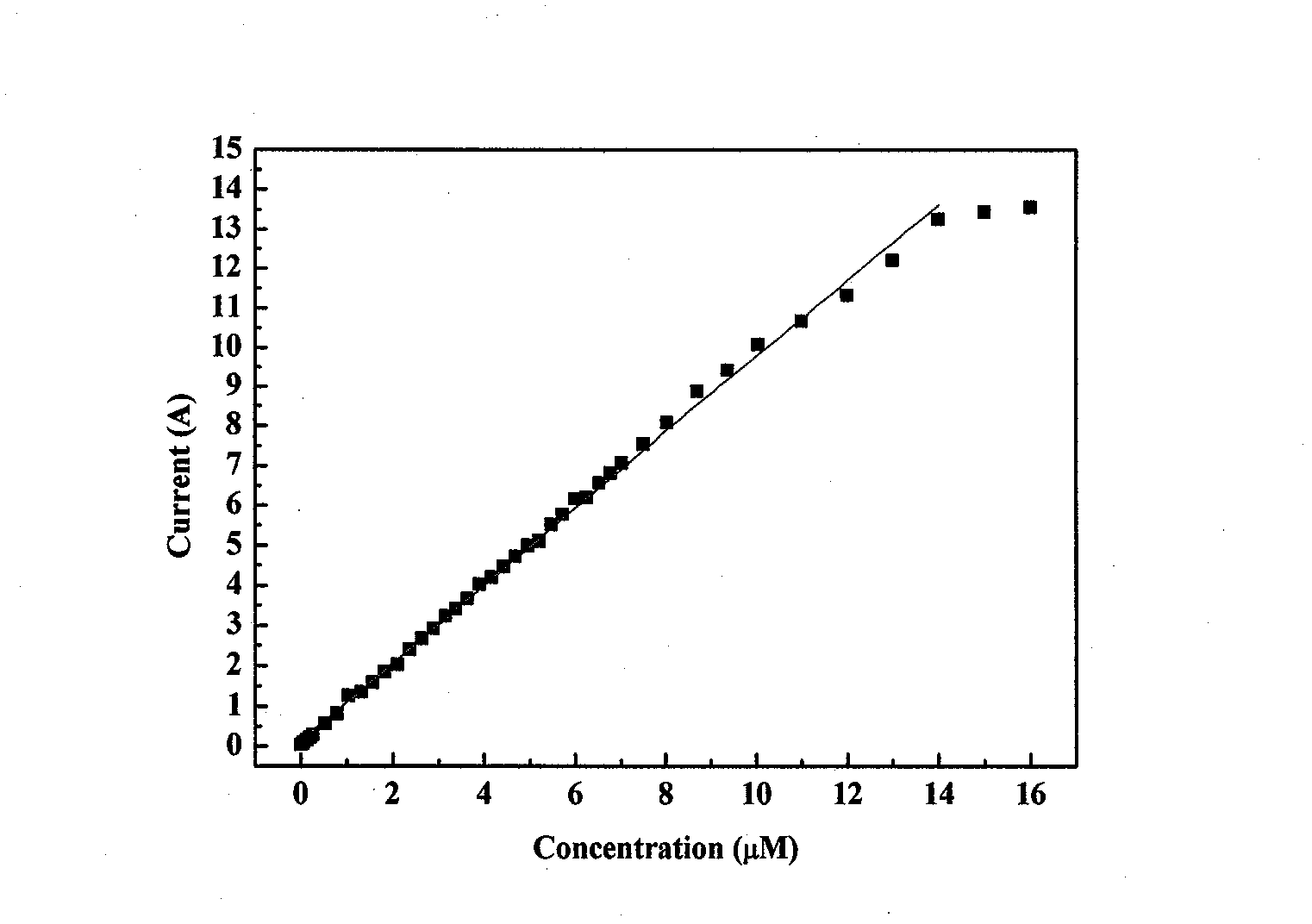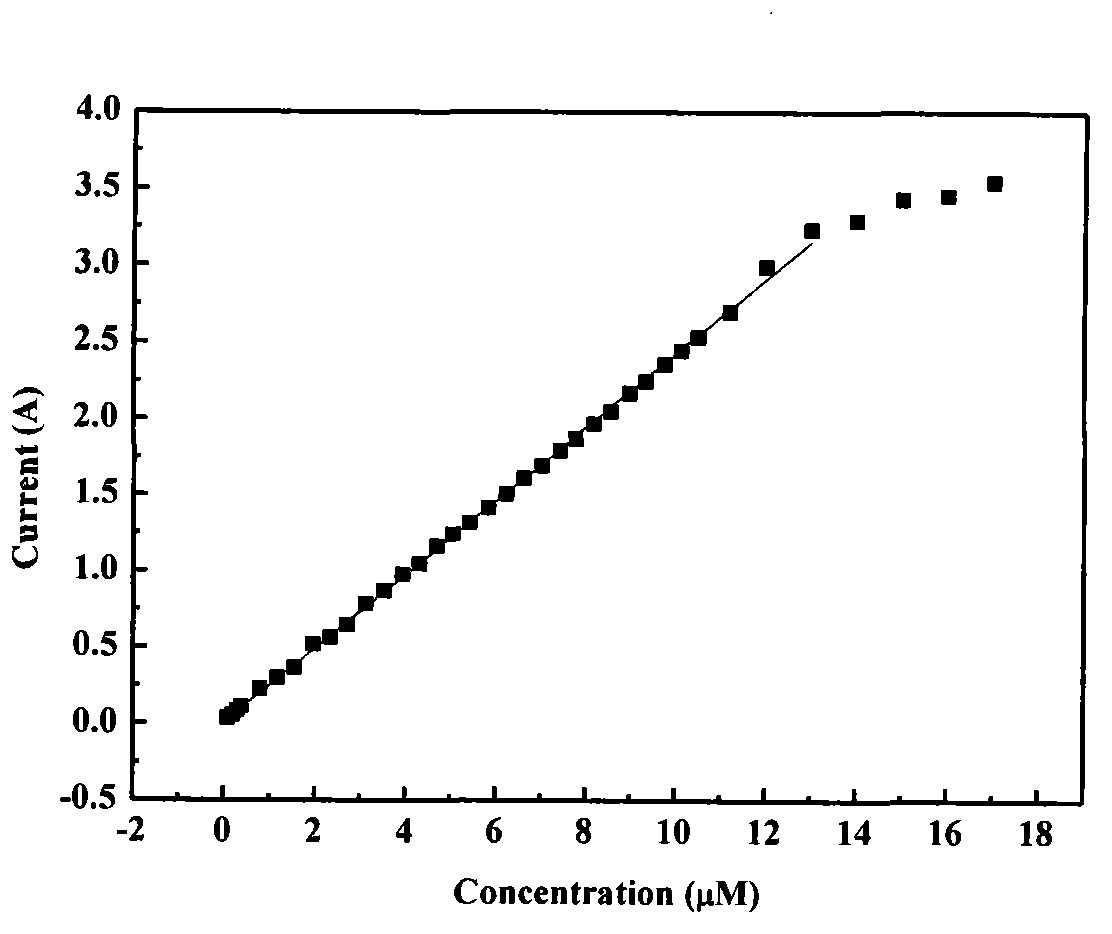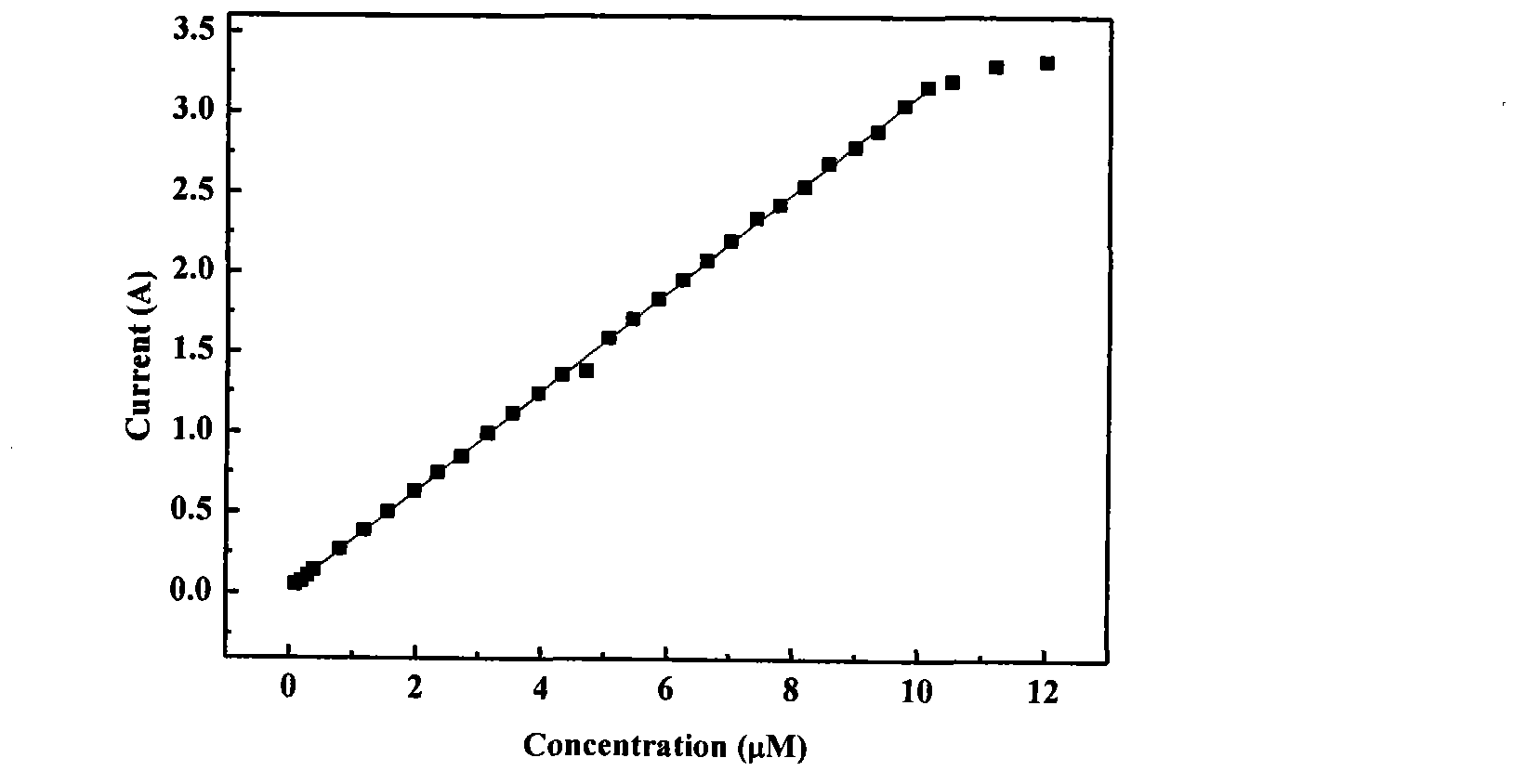Disk type laccase sensor electrode and preparation method thereof
A sensor electrode and disk electrode technology, applied in the field of disk type laccase sensor electrode and its preparation, can solve the problems of poor stability and low sensitivity of laccase sensor, and achieve low detection limit, wide linear range and wide linear range Effect
- Summary
- Abstract
- Description
- Claims
- Application Information
AI Technical Summary
Problems solved by technology
Method used
Image
Examples
Embodiment 1
[0031] 0.2 g of chitosan with a molecular weight of 50,000 was dissolved in 50 ml of acetic acid solution with a mass concentration of 0.5%, and ultrasonically oscillated for 60 min. Then 20ml of AgNO with a mass concentration of 5mg / ml 3 Add it into the above-mentioned chitosan solution, stir it magnetically for 60 minutes, add 15 ml of sodium citrate solution with a mass concentration of 2% dropwise, adjust the pH value of the solution to 6 with 0.1mol / L NaOH, and stir at room temperature for 20 hours to obtain chitosan Sugar-silver nanoparticle sol.
[0032] Pipette 50 μL of the above chitosan-silver nanoparticle sol and add it to 10 ml of laccase solution with a mass concentration of 5 mg / ml, and stir magnetically in an ice bath at 4°C for 48 hours to fully immobilize the laccase on the chitosan-silver nanoparticle solution. In the particle colloid, a laccase-loaded chitosan-silver nanoparticle sol is obtained.
[0033] A 316L stainless steel disc electrode with a diamet...
Embodiment 2
[0037] The operating process and experimental conditions of Example 2 are the same as in Example 1, except that the quality of chitosan is changed to 1 g, and the volume of the chitosan-silver nanoparticle sol loaded with laccase is changed to 20 μL. The mass concentration of p-benzoquinone becomes 20mM, and the electrochemical reduction potential of benzoquinone becomes -0.1V.
[0038] Using the above-mentioned three-electrode working system, measure the response current of different concentrations of hydroquinone on the modified electrode, and make a response current-concentration curve. figure 2 The results showed that the constructed sensor had a sensitivity of 0.31A / M, a linear monitoring range of 0.1-10μM, and a detection limit of 0.29μM.
Embodiment 3
[0040] The operating process and experimental conditions of embodiment 3 are the same as embodiment 1, except that 20ml of AgNO with a mass concentration of 5mg / ml3 Change to 5 mL of HAuCl with a mass concentration of 0.1% 4· 4H 2 O, change the mass concentration of sodium citrate to 0.5%.
[0041] Using the above-mentioned three-electrode working system, measure the response current of different concentrations of hydroquinone on the modified electrode, and make a response current-concentration curve. image 3 The results showed that the constructed sensor had a sensitivity of 0.42A / M, a linear monitoring range of 0.05-15μM, and a detection limit of 0.22μM.
PUM
| Property | Measurement | Unit |
|---|---|---|
| Thickness | aaaaa | aaaaa |
| Diameter | aaaaa | aaaaa |
Abstract
Description
Claims
Application Information
 Login to View More
Login to View More - R&D
- Intellectual Property
- Life Sciences
- Materials
- Tech Scout
- Unparalleled Data Quality
- Higher Quality Content
- 60% Fewer Hallucinations
Browse by: Latest US Patents, China's latest patents, Technical Efficacy Thesaurus, Application Domain, Technology Topic, Popular Technical Reports.
© 2025 PatSnap. All rights reserved.Legal|Privacy policy|Modern Slavery Act Transparency Statement|Sitemap|About US| Contact US: help@patsnap.com



